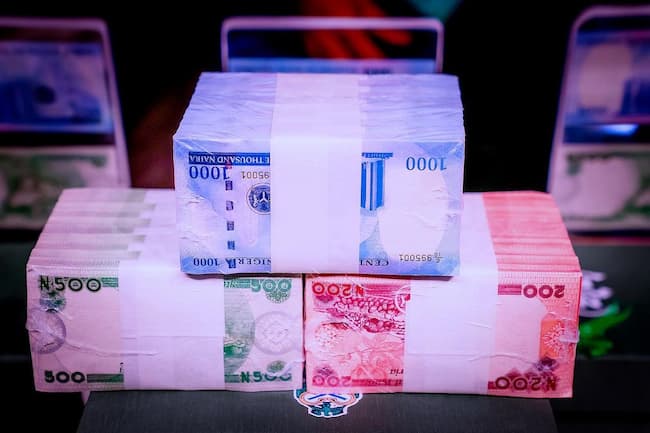The naira reversed its previous downward trend against the US dollar as pressure from foreign exchange (FX) demand and supply disruptions subsided. Data from the FMDQ platform showed that the naira appreciated by 2.51%, closing at ₦1,639.50 per US dollar in the official market.
This significant gain was driven by renewed investor confidence and increased FX inflows that covered overall market demand within the official trading window.
The Central Bank of Nigeria (CBN) has slowed its pace of FX intervention to support the local currency, analysts noted while discussing the 2024 market outlook.
The naira’s outlook remains uncertain. At a MarketForces Africa forum, several analysts stated that unless the CBN completely halts its FX interventions, the exchange rate may not exceed ₦1,700.
FX inflows into the official market have been rising, but so have FX requests for imports. This keeps the liquidity gap open, necessitating intervention from the monetary authorities under a “willing buyer, willing seller” framework.
In December, the CBN is expected to roll out FX automation, which analysts say could be a turning point in stabilizing Nigeria’s currency.
“Automated forex trading will enhance transparency, reduce speculative practices, and increase liquidity by making it easier to track transactions,” analysts stated.
In the parallel market, the naira held relatively steady at ₦1,725 to the US dollar despite year-end demand for foreign currency. Analysts attribute this stability to remittances from Nigerians abroad, which have increased the dollar supply in the parallel market.
Meanwhile, oil prices continued their decline, extending the sell-off that began with the recent U.S. presidential election. A strong dollar and reduced crude imports by China outweighed supply risks related to the Trump administration’s policies and production cuts from Hurricane Rafael.
As a result, Brent crude fell to $75.32, and WTI dropped to $72.00. Gold prices, however, edged higher while remaining near a three-week low, as markets anticipated a rate cut by the U.S. Federal Reserve, with gold trading at $2,702.50 per ounce.














